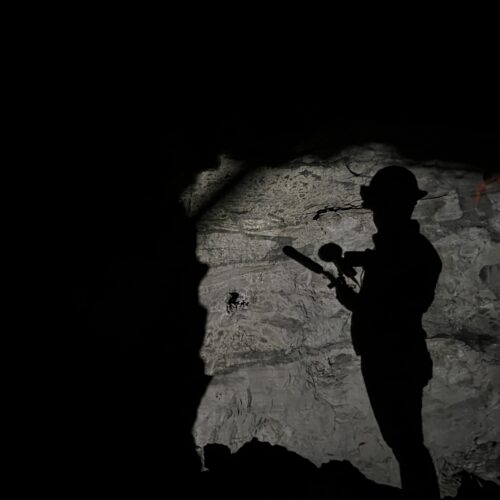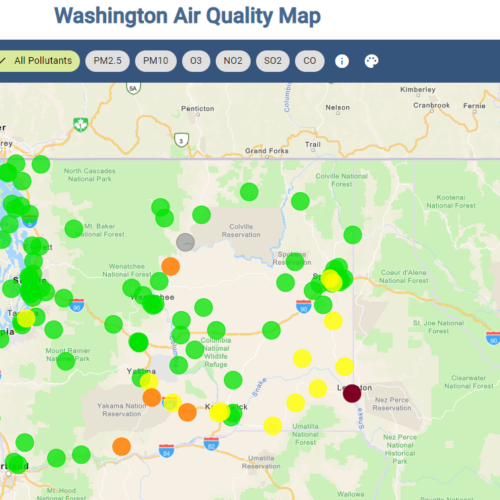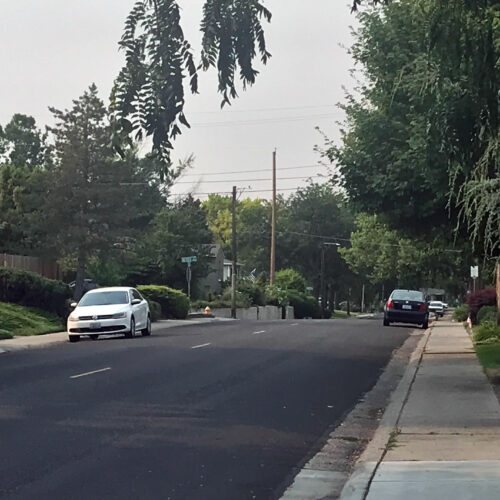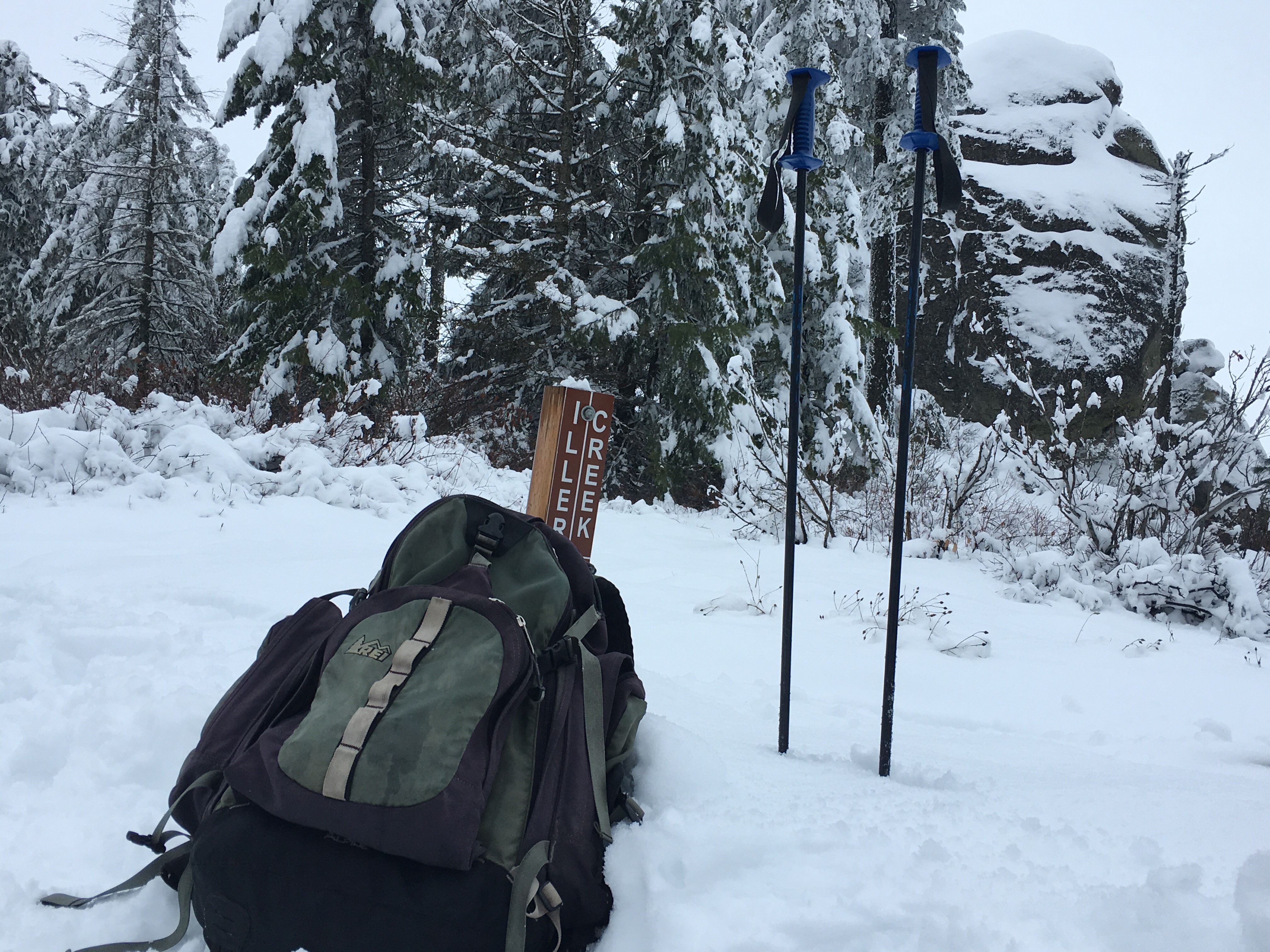
The Importance Of Avoiding Cabin Fever During The Northwest’s Pandemic Winter
BY HANNAH WEINBERGER / CROSSCUT
First published Dec. 28, 2020 on Crosscut.com
With each passing month, more and more Washingtonians are suffering under the physical, emotional and financial damages of enduring a lengthy pandemic. And as we find ourselves in the coldest, darkest days of the year during the worst-case surge yet, it can feel like a herculean task just to take a daily walk around the block.
But to break those repetitive days, with some creative thinking many are still finding varied opportunities to play outside with friends — something experts say is essential for well-being.
“One of the big motivating factors for me is knowing how important getting outside is for my mental health,” says Dr. Josh Lawler, an ecologist and professor at the University of Washington who runs the university’s Nature and Health program. “Many studies have linked time spent in nature with improved mood, reduced stress and anxiety, and even reduced rates of depression.”
Some studies found that even little five-minute outdoor excursions can benefit our health — but 20 to 60 minutes is even better.
“Longer experiences can generate more durable and even memorable benefits, but if we think of what is the most basic experience in terms of time in bad weather or darkness, then a half-hour outside seems doable,” says Lawler’s colleague, Dr. Kathleen Wolf. “Nature experiences are fundamental to our well-being. People may be time constrained, yes, but making the effort to go outside isn’t a luxury.”
Seattle Parks and Recreation employees had been working to create socially distanced activities throughout all of COVID-19, says recreation division director Justin Cutler. But as winter approached, they realized they needed to do more. “I think we’re all struggling with social isolation,” says Cutler.
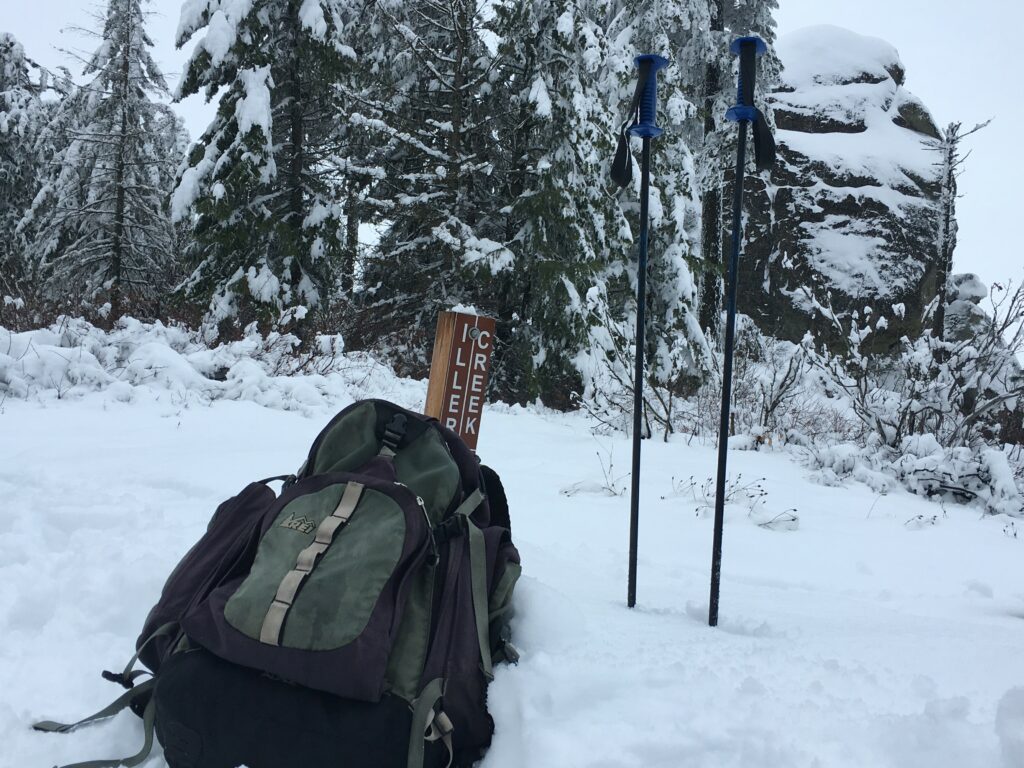
Getting outside is important all times of the year for all people. In 2020 and extending into 2021, it’s even more important. Here, a winter hike on New Years Day 2021 in the Dishman Hills Conservation Area in Spokane County. CREDIT: Scott Leadingham/NWPB
Across the summer and even through the winter, Parks and Recreation has seen a “dramatic increase” in park usage and park program participation, says Cutler’s colleague Lakema Bell, a program coordinator. “We thought that it would die down in the winter, but that’s not been the case,” she says.
Demand for space led the department to launch a new drop-in program for small pandemic pods on city ball fields. “This isn’t for organized games or practices,” Cutler says. “Oftentimes people are precluded from being able to participate in our great ball fields because of organized sports. A drop-in experience where you don’t have to have it on your schedule might make you just say, ‘Hey, I want to go play soccer or Frisbee or lacrosse down at the field today. And let’s go do that.’”
Even beyond Seattle’s parks and green spaces, plenty of people are devising ways to get outside in ways that both meet baseline health needs and replicate some of the wild magic missing from a season without big group activities or trips to faraway mountain towns.
Creature comforts
“By mid-summer we knew this would not be your average winter,” says Phil Torres, a Seattle-based scientist and science communicator who was looking forward to big ski trips and rented cabins with friends. “That reality is really hitting during these darker, rainier days, but we realize the responsibility put onto us of keeping our family and community safe. So we have had to find ways to work around it!”
Torres and his wife, Silja Danielsen, relocated from New York to Seattle during the pandemic to be closer to family and nature. As a wildlife biologist, Torres was used to searching for insects around the world. But with travel limited, he started looking for diverse plants and animals while gardening, visiting his bird feeders and walking in his neighborhood.
The couple started learning native species of plants and mushrooms — “especially the edible ones,” he says, “so we would take the same paths watching the trailing blackberries grow until we could finally pick them! I can walk the same safe walk over and over and always be entertained.”
Torres uses iNaturalist, a crowdsourced species identification app that feeds millions of photo uploads into artificial intelligence software, to take vicarious trips to look up plant and animal species he might encounter in parks on future visits. He uses it to explore his backyard, too.
“As a relatively new transplant to this area, it is still really exciting to know that people are finding owls right near my new home, flocks of snow geese only 30 minutes away,” he says.
“Studies have shown positive effects of indoor plants, window views, videos of natural scenes and photos,” Wolf says. However, UW research shows that those effects aren’t likely to be as pronounced as the real thing.
Writer Sabra Boyd used to forage for food as a once-homeless teen in Washington, and the skill has proved extra useful in a pandemic.
She brings home cedar, Oregon grape, chanterelles and Douglas fir in the winter — the latter producing tea with a “bright citrusy pine flavor.” Some of her finds make their way into perfumes. She concocts them with a chemistry distillation kit she bought last spring “because I’m afraid of anosmia and losing my sense of smell to COVID,” she says. She often photographs specimens before collecting them.
“I feel starved for human interaction in a way that I never have felt before, so while I still enjoy many of the same outdoor winter activities as I have before, when I meet another photographer at the same place that I’m photographing, I tend to start a conversation about the wildlife that I saw there last week,” she says. “People in Seattle seem more friendly and connected than ever before this year.”
Snowbound
For snow-averse Bennett Rahn, winter is usually the time to play inside at climbing gyms. But with gyms limited, the tech worker realized she needed a plan to “keep my mental health in shape over the winter,” she said.
She decided to learn how to ski — for real this time, after trying three winters in a row. Rahn bought gear and researched how to ski safely. She decided to focus primarily on backcountry skiing because it’s easier to social distance than at a resort, and the uphill component appealed to her desire for physical challenge.
She usually skis before work and often pursues night runs afterward. She bought a nighttime weekday ski pass for the nearby Summit at Snoqualmie. “I could conceivably see myself doing some lift time on weekdays, but on weekends, I’ve just been doing as much uphill travel as possible,” she says. When the Summit was closed, she was able to do uphill travel at the resort itself. She’s been going to Paradise at Mount Rainier a lot, too, but says it gets crowded.
Despite her success on the slopes, she says it is unlikely to replace her first love: climbing.
“I’m getting better at [skiing]. And I’m liking it more and more. And I’m so grateful for it as an activity that I can channel some of this manic energy into,“ she says. “But would I rather be climbing? 130%. Would I rather be at the climbing gym even? Yes. There’s a sauna there.”
Finding the easy moments
For Kindra Ramos, director of communications at the Washington Trails Association, 2020 has taught her that you don’t need to travel great distances to get to nature, or even dedicate significant time to reap its benefits. “Figuring out new ways to appreciate what’s right in front of me has been very special, and kind of a gift in its own way,” she says.
Ramos has ways to make even nearby hikes special: She rises early to avoid crowds, packs a thermos of her favorite warm holiday beverage and takes extra time to watch a waterfall or listen to the rain.
Ramos has taken to exploring her neighborhood on foot, adding novelty by picking a direction at night and walking to find holiday lights. “I keep pushing myself a little bit further, and every time I see a light display, I’ll change my course,” she says. “It helps mix up the neighborhood walk you’ve now been doing for nine months, with my directions set by, ‘Oh, that’s pretty!’ and figuring out what I like.”
Even on cold, wet days when she dreads going outside, Ramos finds it helps to commit to just five minutes outside, and blocking it off on a daily calendar around lunchtime. “‘You will stand there for five minutes, you will walk somewhere, I don’t care, stare at the darn tree for five minutes,’” she tells herself. On hard days, she centers herself by visiting a big oak tree in her neighborhood to watch the squirrels and listen to the leaves: “It’s not just a walk in the park: It’s a breath of air that you might not have gotten any other way.
“The world is really hard right now. … Find as many easy moments as possible, [give yourself] permission to feel good about that, and let that be enough.”
Break the cycle
When Meghan Young, founder of the Pacific Northwest Outdoor Women group, started hearing estimates about a second spike in COVID cases, she knew she’d have to change her winter plans.
Indoor cycling, which she picked up in May, has helped her stay connected to the greater world without leaving the house. Young had never enjoyed spin class, but when friends raved about the Peloton Bike and the associated fitness app with virtual map features, she gave it a shot — and this time it stuck. “As much as I identify as a ‘weather be damned’ outdoorsy person, the thought of riding so many miles in the freezing rain is entirely unappealing to me!” she says.
On Sept. 13, she began working toward a goal of virtually riding across the country from San Diego to Jacksonville, Florida — a lofty goal expansive enough to carry her through the start of winter. “It also gave me a sense of agency in a world that’s been very challenging — the feeling that I could choose at least one of my ‘hardships.’ Elective suffering is a privilege that I’m lucky to take on,” she says.
Four-season cyclist Cory Potts has always preferred recreating in the city in the winter, riding to meet friends at restaurants or their homes instead of going into nature. “Riding for me is about how I engage with the city and with other people,” says Potts, who runs the Center for Bicycle Repair.
While winter riding is old hat for Potts, the way he’s riding is novel. Potts has been riding one roughly 8.5-mile route around Lake Union daily since March. He knew, physically and mentally, that he could tackle it and make an odd habit out of his approach: He only rides counterclockwise.
“Part of me, I think, wanted to have a meaningless fixed route to ride because even though it is meaningless, it is something I can control,” he says.
The ride seems monotonous on its surface, but his relationship with it has deepened to reveal Seattle’s complexity. Riding between Capitol Hill, Fremont/Wallingford, and South Lake Union — watching businesses open and close, unsanctioned encampments grow and disperse, barricades rise up around police precincts and businesses, whole convention centers transform from pit to building — has made him appreciate how distinguishable Amazon’s campus is from the rest of the city.
“This part of Seattle feels anesthetized or like it’s embalmed,” he says. The sidewalks are pressure washed every three days; there’s no debris and no unhoused people. “It’s clean, in an ugly way.”
Pursuing small wonders
Seattle author David Williams, whose writing explores how Seattle’s built environment is part of and influenced by the natural environment, has been leading walking tours of the city for close to 20 years (now virtually, for Airbnb). He has a history of finding new ways to experience old things close to home —a hugely valuable skill for people walking the same routes on repeat.
For Williams, a self-described “aficionado of small wonders,” those walks might be physically in the same place — but they have different qualities, different weather, different animals every day. You might notice new things, depending on where you look.
“I’m not encouraging people to pry, but particularly in urban and downtown environments, there are these amazing details you wouldn’t see if you didn’t have binoculars or didn’t look down at your feet,” Williams says.
Sometimes, forcing himself to be more observant involves Seattle-themed bingo cards and scavenger hunts. Williams and his wife recently “traveled to Kenya” by cooking Kenyan recipes, listening to a Nairobi bookstore’s podcast and calling an old friend who lived in Nairobi for two decades. They completed their adventure by taking a pseudo-safari downtown in search of lion accents on buildings. They found 283 lion heads, big and small, from a few feet off the ground to 30 stories up.
“We found [lions] I had never seen before … and how many times have I walked through downtown Seattle? Dozens and dozens. There’s so much out there to discover,” he says.
And even in the dead of winter, during a pandemic that narrows our world, it doesn’t have to limit its depth, he says. Winter urban hikes offer their own sort of beauty and thrill, especially for people craving signs of human life. “The other thing about an urban environment that you don’t get in a wild environment is, people just do nutty shit. Particularly nowadays, with the holidays.”
“I [just] saw an inflatable Zamboni. Who knew you could get an inflatable Zamboni?”
Visit crosscut.com/donate to support nonprofit, freely distributed, local journalism.




